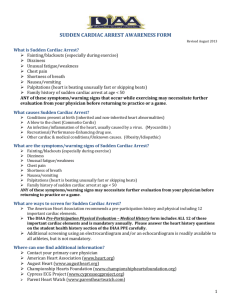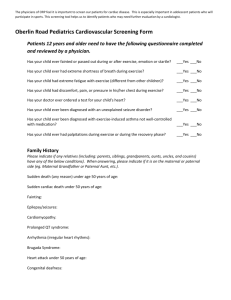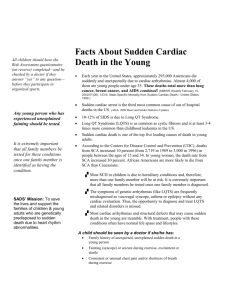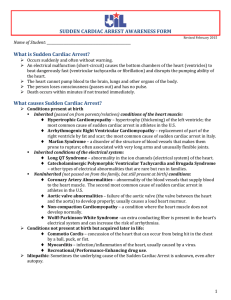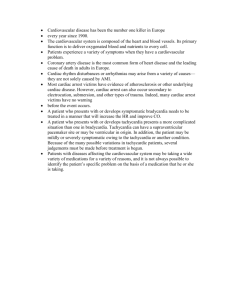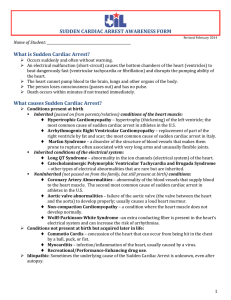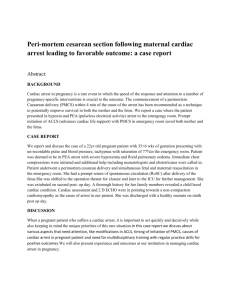Patient Education: Role of Ejection Fraction
advertisement
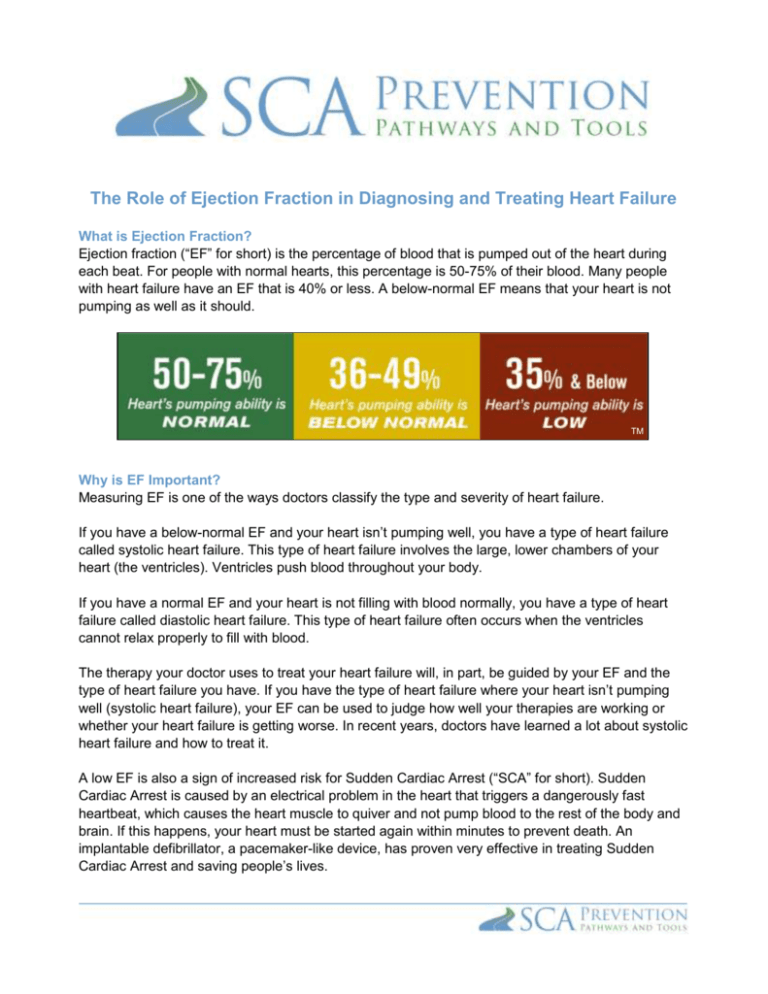
The Role of Ejection Fraction in Diagnosing and Treating Heart Failure What is Ejection Fraction? Ejection fraction (“EF” for short) is the percentage of blood that is pumped out of the heart during each beat. For people with normal hearts, this percentage is 50-75% of their blood. Many people with heart failure have an EF that is 40% or less. A below-normal EF means that your heart is not pumping as well as it should. TM Why is EF Important? Measuring EF is one of the ways doctors classify the type and severity of heart failure. If you have a below-normal EF and your heart isn’t pumping well, you have a type of heart failure called systolic heart failure. This type of heart failure involves the large, lower chambers of your heart (the ventricles). Ventricles push blood throughout your body. If you have a normal EF and your heart is not filling with blood normally, you have a type of heart failure called diastolic heart failure. This type of heart failure often occurs when the ventricles cannot relax properly to fill with blood. The therapy your doctor uses to treat your heart failure will, in part, be guided by your EF and the type of heart failure you have. If you have the type of heart failure where your heart isn’t pumping well (systolic heart failure), your EF can be used to judge how well your therapies are working or whether your heart failure is getting worse. In recent years, doctors have learned a lot about systolic heart failure and how to treat it. A low EF is also a sign of increased risk for Sudden Cardiac Arrest (“SCA” for short). Sudden Cardiac Arrest is caused by an electrical problem in the heart that triggers a dangerously fast heartbeat, which causes the heart muscle to quiver and not pump blood to the rest of the body and brain. If this happens, your heart must be started again within minutes to prevent death. An implantable defibrillator, a pacemaker-like device, has proven very effective in treating Sudden Cardiac Arrest and saving people’s lives. Sometimes people confuse Sudden Cardiac Arrest with a heart attack. Sudden Cardiac Arrest is not the same as a heart attack. A heart attack is caused by blockage in one or more of the arteries supplying blood to the heart. It can be thought of as a problem with the heart’s plumbing system. Sudden Cardiac Arrest is caused by a very fast and irregular heart rhythm that starts in the ventricles (the heart’s lower chambers). It can be thought of as a problem with the heart’s electrical system. Your EF Can Change EF can go up or down depending on the nature of each person’s disease and on the type and effectiveness of therapies that are prescribed. Small changes in your EF are nothing to worry about, but if your EF drops steadily over months, your doctor will change your therapy. Drugs, devices, and surgeries can cause a person’s EF to increase over time. Therefore, your EF on a particular day is less important than the overall trend. Your doctor will let you know how often your EF should be checked. Measuring EF One of the most important tests used to diagnose heart failure and measure EF is called an echocardiogram, or “echo” for short. The test, which is painless and can often be performed in your doctor’s office, involves using sound waves to make a picture of your heart. An echocardiogram allows your doctor to study your heart valves and the chambers of your heart to find out whether the heart is pumping normally. There are other ways to measure your EF that your doctor may also decide to use. Adapted by the SCA Prevention Medical Advisory Team from the IMPROVE HF registry toolkit. This material is intended to be educational. It is not intended to replace the information provided to you by your healthcare providers and may not be directly applicable for your individual clinical circumstance. Please refer to the manufacturers’ prescribing information and/or instructions for use for the indications, contraindications, warnings, and precautions associated with the medications and devices referenced in these materials. Sponsored by Medtronic, Inc. May 2007 UC200705528 EN
